*NURSING > EXAM > WALDEN UIVERISTY, NURS 6635 MIDTERM PMHNP Newly Updated Exam Elaborations|2021 (All)
WALDEN UIVERISTY, NURS 6635 MIDTERM PMHNP Newly Updated Exam Elaborations|2021
Document Content and Description Below
QUESTION 1 1. Select the neurotransmitter involved in obsessive-compulsive disorder (OCD) in children and adolescents based on the common comorbidity of tic disorders. A Norepinephrine B GABA . ... C Dopamine . D Acetylcholine Answer: Dopamine Obsessive-compulsive disorder (OCD) is linked to defects in the cortico-striatal-thalamic-cortical (CSTC) circuitry, which may be linked to neurotransmitter dysregulation throughout this network. Serotonin, dopamine, glutamate, and -aminobutyric acid (GABA) are the main neurotransmitters throughout the CSTC. Compulsive behaviors linked to OCD are likely the product of a related dopaminergic reward system dysfunction. Continuous ventral striatum activation may lead to an undirected expectation of reward. Anxiety and a desire to fill the gap are caused by unfulfilled expectations. Step-by-Step explanation References Richter, M. A., De Jesus, D. R., Hoppenbrouwers, S., Daigle, M., Deluce, J., Ravindran, L. N., ... & Daskalakis, Z. J. (2019). Evidence for cortical inhibitory and excitatory dysfunction in obsessive compulsive disorder. Neuropsychopharmacology, 37(5), 1144-1151. Pittenger, C., Krystal, J. H., & Coric, V. (2016). Glutamate-modulating drugs as novel pharmacotherapeutic agents in the treatment of obsessive-compulsive disorder. NeuroRx, 3(1), 69-81. 1 points QUESTION 2 1. Select the class of drugs most effective in treating pain disorder. Answer: A Opioid analgesics . B TCA and SSRI . antidepressants C Beta-adrenergic . blockers D Mood stabilizers . Opioids analgesics Opioid analgesics are drugs that function on opioid receptors that are used to alleviate pain. Weak opioid analgesics are often used to describe compound analgesics that combine acetaminophen with low levels of codeine or tramadol. Opioid analgesics, which include oxycodone, hydrocodone, and codeine, can be used to relieve mild to extreme acute pain. Opioids are medications that are chemically similar to, but more potent than, the body's own pain relievers (endorphins). They operate by binding to receptors on cells, primarily in the brain, spinal cord, and gastrointestinal tract. Step-by-Step explanation References Andrieu, G., Amrouni, H., Robin, E., Carnaille, B., Wattier, J. M., Pattou, F., ... & Lebuffe, G. (2017). Analgesic efficacy of bilateral superficial cervical plexus block administered before thyroid surgery under general anaesthesia. British journal of anaesthesia, 99(4), 561-566. Mangione, M. P., & Crowley-Matoka, M. (2018). Improving pain management communication: how patients understand the terms "opioid" and "narcotic". Journal of general internal medicine, 23(9), 1336. 1 points QUESTION 3 1. Select the most commonly occurring eating disorder. Answer: A Anorexia . nervosa B Bulimia . nervosa C Purging . D Binge . A. Anorexia Nervosa Step-by-Step explanation Anorexia nervosa is one eating disorder that most people have heard of. People with anorexia often starve themselves in order to achieve an unattainable ideal of thinness. This condition, like many eating disorders, tends to affect more women than men. 1 points QUESTION 4 1. Select the disorder in which inflicting injury to self or others is common. A Pain . B Conversion . C Somatic . symptom D Factitious . Factitious disorder is a serious mental disorder in which someone deceives others by appearing sick, by purposely getting sick or by self-injury. QUESTION 5 1. Select two imaging methods used to study anxiety disorders. A CT . B TM . S C MRI . D EKG . QUESTION 6 1. Select the two factors that do not cause dissociative amnesia. A Sexual . abuse B Substance . abuse C Surgical pain . D Partner . betrayal Answer: A . Step-by-Step explanation The correct answer is; A. Sexual abuse D. Partner betrayal Substance abuse and surgical pain can cause dissociative amnesia. Dissociative amnesia is a disorder in which a person loses track of vital details from their past. This forgetfulness can be limited to a few key areas (thematic), or it might encompass a large portion of a person's life history and/or identity (general). Drug and alcohol usage not only raises the risk of having a co-occurring or comorbid substance use disorder, but it can also intensify dissociative amnesia symptoms. Dissociative disorders are essential to the pain physician because persistent pain can be Reference Wagener, D. (2019, September 5). Treatment for dissociative amnesia and substance abuse. American Addiction Centers. https://americanaddictioncenters.org/dissociative- disorders/amnesia-substance- abuse-treat QUESTION 7 1. Select the correct epidemiologic fact about major depression in children and adolescents. A There is a 20% incidence by age 18 . B The incidence is equal in adolescent females and males . C There is a decreased incidence after 20 . D The incidence is five- to ten-fold greater in children with a parent or sibling . with major depression Answer: • A. There is 20% incidence by age of 18 years. Step-by-Step explanation Depression takes place at an estimated rate of around two percent during childhood and from four to around seven percent in time of the adolescence stage. This mental illness is a top cause of health impairment called the morbidity and death also known as mortality which is increasing rapidly every time. Depression is common in time of teenage years, having impacts on about 20%of adolescents by the time they reach adulthood, that is the age of 18. Reference. Jacobs, R. H., Reinecke, M. A., Gollan, J. K., & Kane, P. (2008). Empirical evidence of cognitive vulnerability for depression among children and adolescents: A cognitive science and developmental perspective. Clinical psychology review, 28(5), 759-782. A Hippocampu . s B Temporal . lobe C Amygdala . D Corpus . callosum A Drug adverse effects . B Variability of family . therapy C Patient resistance . D Noncompliance with . therapy Answer; C) Patient resistance Step-by-Step explanation Anorexia nervosa (AN) is a chronic illness in which sufferers experience a slew of negative consequences in a variety of areas of their lives as a result of their low weight and restrictive food intake. Given these negative consequences, which are visible in physical, emotional, and social dimensions, it can be tempting to dismiss the condition entirely. As a result, AN sufferers' inability to pursue, continue, or participate in care may also be perplexing from an outsider's perspective. This ego-syntonic perspective is most prevalent in anorexia nervosa. When an eating disorder is experienced as ego-syntonic, there is little to no desire to alter the habits, resulting in high levels of medication resistance that worsens over time. The egosyntonic aspect of the disease, in which individuals with anorexia nervosa esteem their condition, is a major issue for clinicians treating the illness. This hinders encouragement for rehabilitation and involvement with care. The aim of this review article is to explain the essence of egosyntonicity in anorexia nervosa by examining both qualitative and quantitative studies on the topic, and, more importantly, to present strategies for overcoming this impediment to recovery in anorexia nervosa care. Therefore, we can conclude that, the greatest impediment to treating anorexia nervosa patients is option C, Patient resistance. References The Egosyntonic nature of anorexia: An impediment to recovery in anorexia nervosa treatment. (2019, January 14). PubMed Central (PMC). Retrieved April 6, 2021, from https://www.ncbi.nlm.nih.gov/pmc/articles/PMC5743910/ Patient resistance in eating disorders. (2014, September 24). Psychiatric Times. Retrieved April 6, 2021, from https://www.psychiatrictimes.com/view/patient-resistance-eating-disorders Perplexities of treatment resistence in eating disorders. (2013, November 7). BMC Psychiatry. Retrieved April 6, 2021, from https://bmcpsychiatry.biomedcentral.com/articles/10.1186/1471- 244X- 13-292 A Parasomni . a B Hypersom . nia C Insomnia . D Apnea . Answer: c. Insomnia Step-by-Step explanation Insomnia refers to the inability to stay asleep and fall asleep. It the most common sleeping disease. Markedly, narcolepsy triggers extreme sleepiness during the daytime, while hypersomnia involves the inability to remain awake in the day. The others are severe but less common than insomnia. For instance, apnea affects frequent breathing when one is sleeping. Parasomnia leads to unusual behavior when sleeping that can happen at any stage and time of sleep. It may include the transition from sleeping to wakefulness, talking, moving around, and doing abnormal things while asleep. Reference; Morin, C. M., Drake, C. L., Harvey, A. G., Krystal, A. D., Manber, R., Riemann, D., & Spiegelhalder, K. (2015). Insomnia disorder. Nature Reviews Disease Primers, 1(1), 1-18. QUESTION 11 1. Select the percentage of untreated PTSD patients who recover after one year. A 10 . % B 20 . % C 30 . % D 50 . % Answer: PTSD Data compiled by the U.S. Department of Veterans Affairs' National Center for PTSD indicate thatroughly half of all American women and more than half of all American men will experience traumatic situations associated with the later onset of post-traumatic stress disorder. However, much smaller numbers of men and women will actually develop the disorder. Specific traumas linked to the condition include combat participation, being present in a combat zone, adult exposure to physical or sexual attacks, childhood exposure to physical or sexual abuse, exposureto severe floods or other national disasters, exposure to life- threatening accidents and exposure to life-threatening physical illness. For a number of reasons, a woman exposed to severe mental/emotional trauma has higher chances of developing PTSD than a man exposed to such trauma. Doctors can't diagnose PTSD in a person who has undergone a highly traumatic experience within a period of 30 days. Instead, they diagnose the condition in people who continue to experience symptoms after 30 days or only show the first signs of a damaging stress reaction after 30 days. Specific symptoms of the condition include nightmares or flashbacks that involuntarily recall a traumatic situation, an excessive state of mental arousal stemming from an overactive "fight-or-flight" response, avoidance of anything that serves as a trauma reminder and an ongoing or recurring negative outlook that impairs day- to-day functionality. Step-by-Step explanation How Often Do Adults Recover? In the study review published in Clinical Psychology Review, researchers from the Netherlands' University of Amsterdam and Tilburg University and the United Kingdom's Queen Mary University of London used data gathered from 42 previously conducted studies to determine how often people diagnosed with PTSD recover 10 months or more after receiving their initial diagnosis if they don't receive treatment geared toward their condition. The studies under consideration included 81,642 adults diagnosed with the disorder. On average, the studies looked at the outcomes for untreated PTSD patients over the course of 40 months. The researchers looked at the numbers of people who no longer had diagnosable cases of PTSD; they considered cases of "spontaneous" remission rather than cases of remission stemming from PTSD-specific treatment. At the low end, the recovery rate for the participants of one study was just 8 percent; at the high end, the recovery rate for the participants of another study was 89 percent. All told, 44 percent of the participants in all of the studies recovered from their condition and no longer qualified for a PTSD diagnosis. The study's authors note that the highest rates of spontaneous recovery apparently occur among people exposed to natural disaster-related trauma; conversely, the lowest rates of recovery apparently occur among people exposed to physical illness-related trauma. They also note that people diagnosed with PTSD fairly soon after developing their symptoms typically have higher chances of recovering spontaneously than people diagnosed after exhibiting symptoms for extended amounts of time. The authors believe their findings contribute considerably to the understanding of PTSD recovery, as well as the understanding of the lasting effects of specific sources of PTSD. It's critically important to point out that no one can tell who will naturally recover from the condition; for this reason, all affected individuals should seek prompt treatment from qualified mental health professionals. https://www.recoveryranch.com/addiction-blog/who-is-most-likely-to-recover-from-ptsd-without- treatment/ Significance Trauma disorders are a common and costly problem in the United States. An estimated 5.2 million American adults ages 18 to 54, or approximately 3.6 percent of people in this age group in a given year, have PTSD. In 1990, anxiety disorders cost the U.S. an estimated $46.6 billion. Untreated PTSD from any trauma is unlikely to disappear and can contribute to chronic pain, depression, drug and alcohol abuse and sleep problems that impede a person's ability to work and interact with others. According to psychologist R.C. Kessler's findings from The National Cormorbidity Survey Report (NCS) that examined over 8,000 individuals between the ages of 15 to 54, almost 8 % of adult Americans will experience PTSD at some point in their lives, with women (10.4%) twice as likely to be victims as men (5%). https://www.apa.org/research/action/ptsd QUESTI ..............................................................................continued [Show More]
Last updated: 1 year ago
Preview 1 out of 56 pages
Instant download

Buy this document to get the full access instantly
Instant Download Access after purchase
Add to cartInstant download
Reviews( 0 )
Document information
Connected school, study & course
About the document
Uploaded On
Oct 18, 2021
Number of pages
56
Written in
Additional information
This document has been written for:
Uploaded
Oct 18, 2021
Downloads
0
Views
68

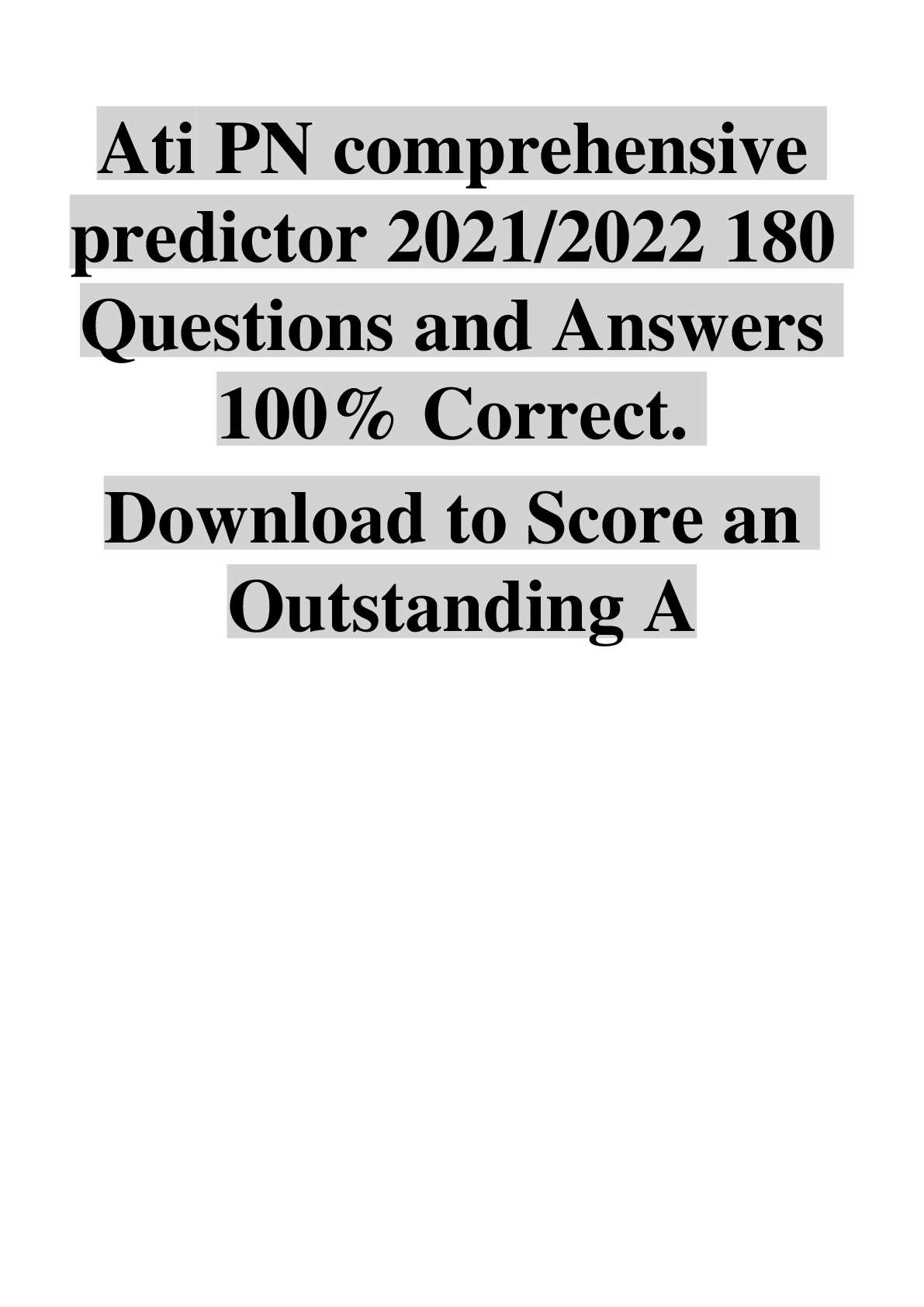

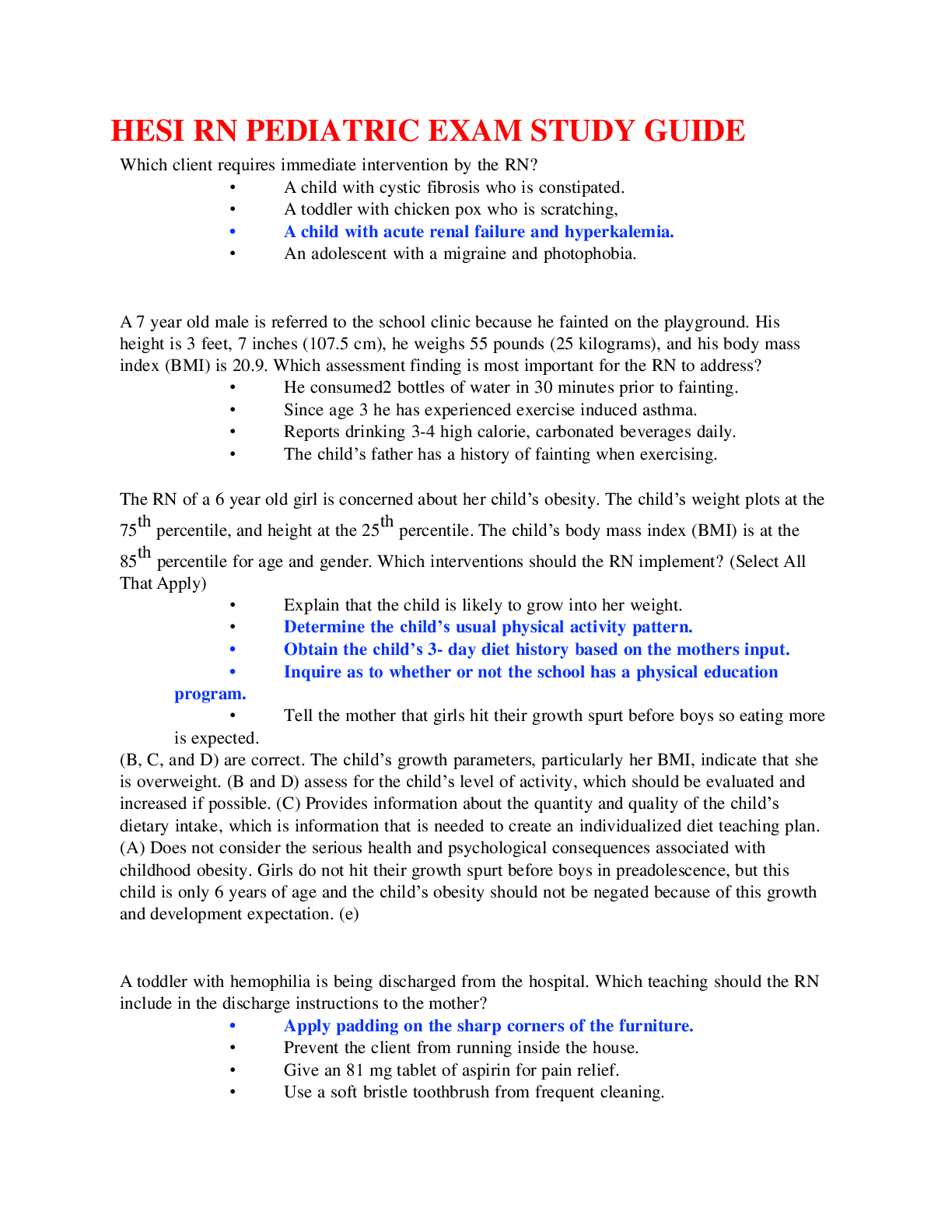




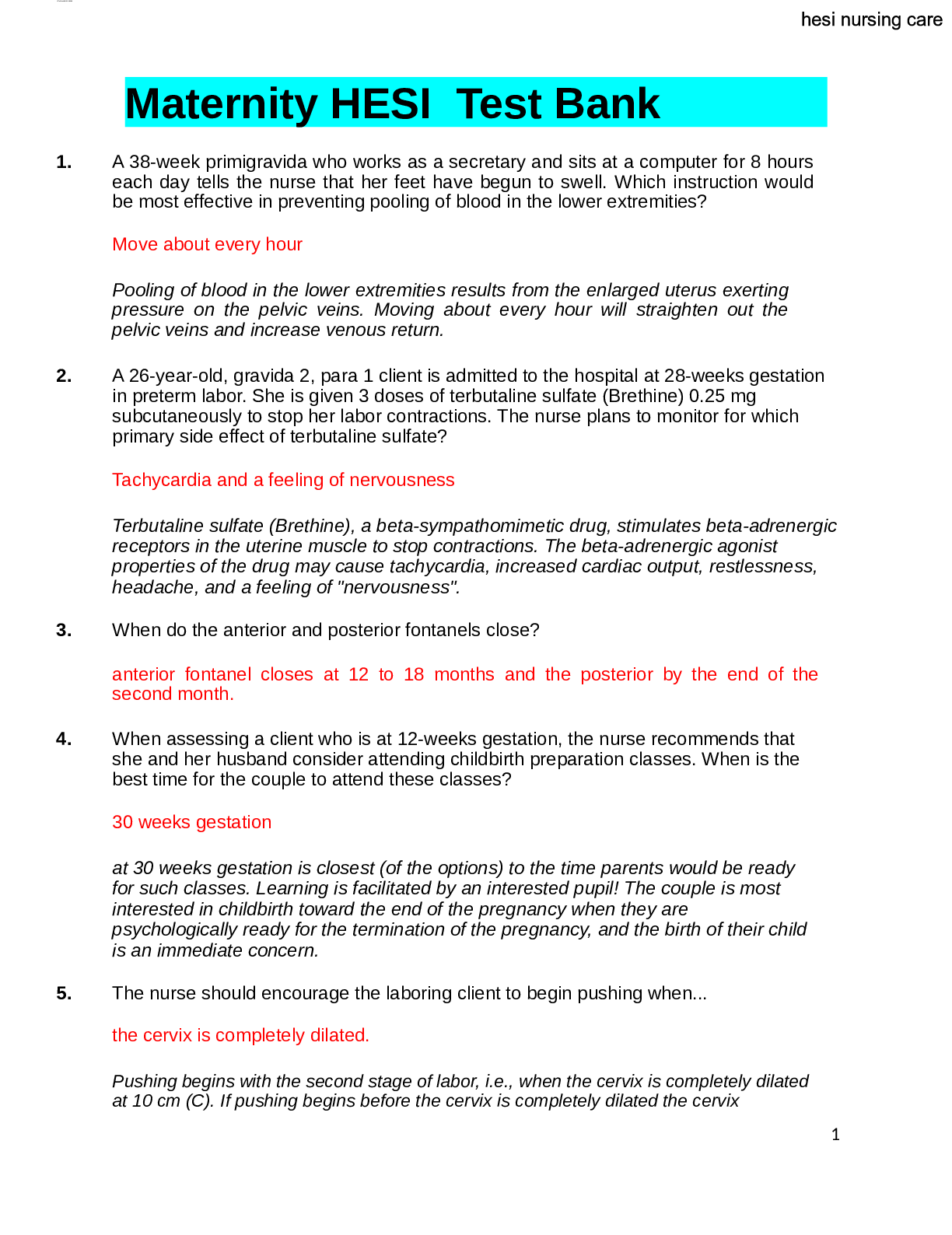
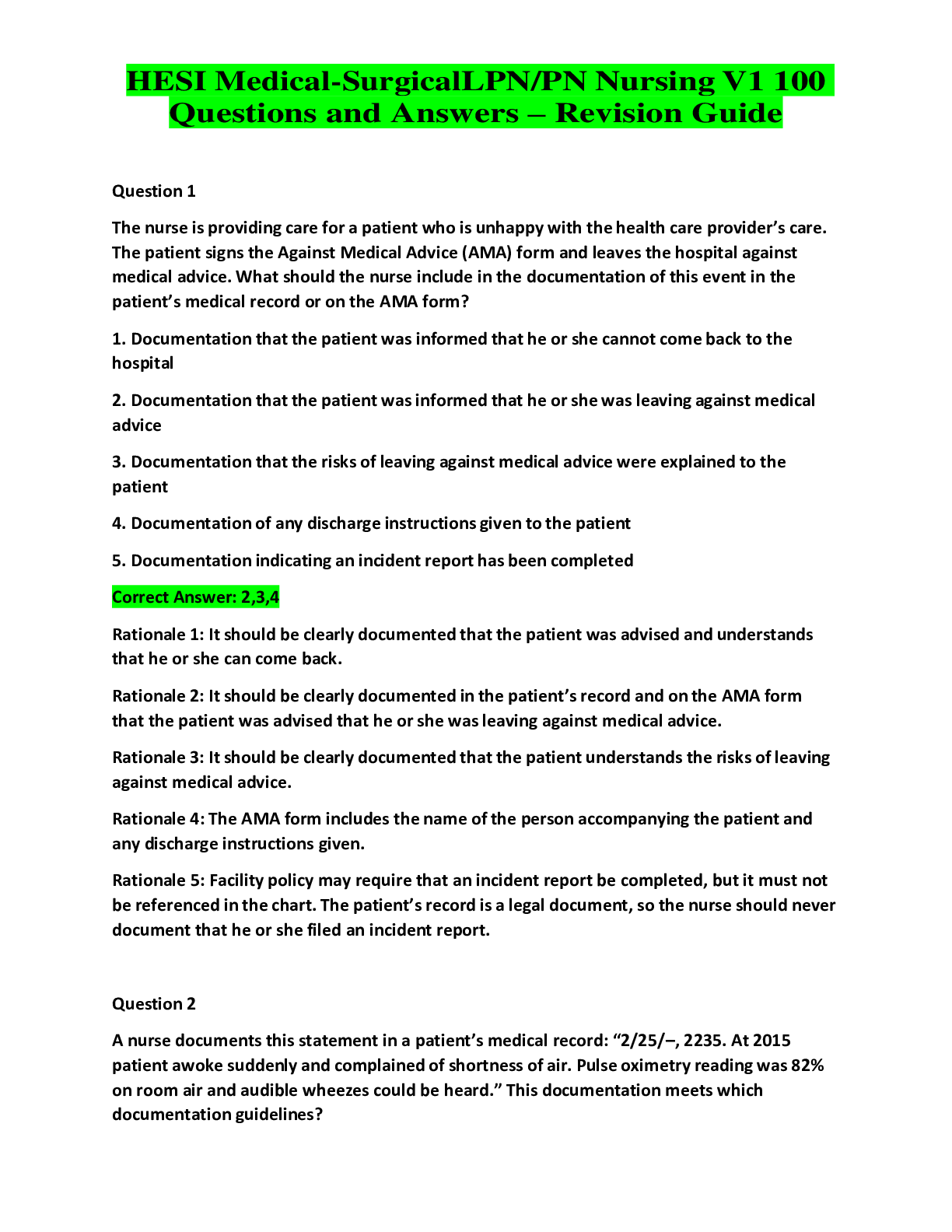

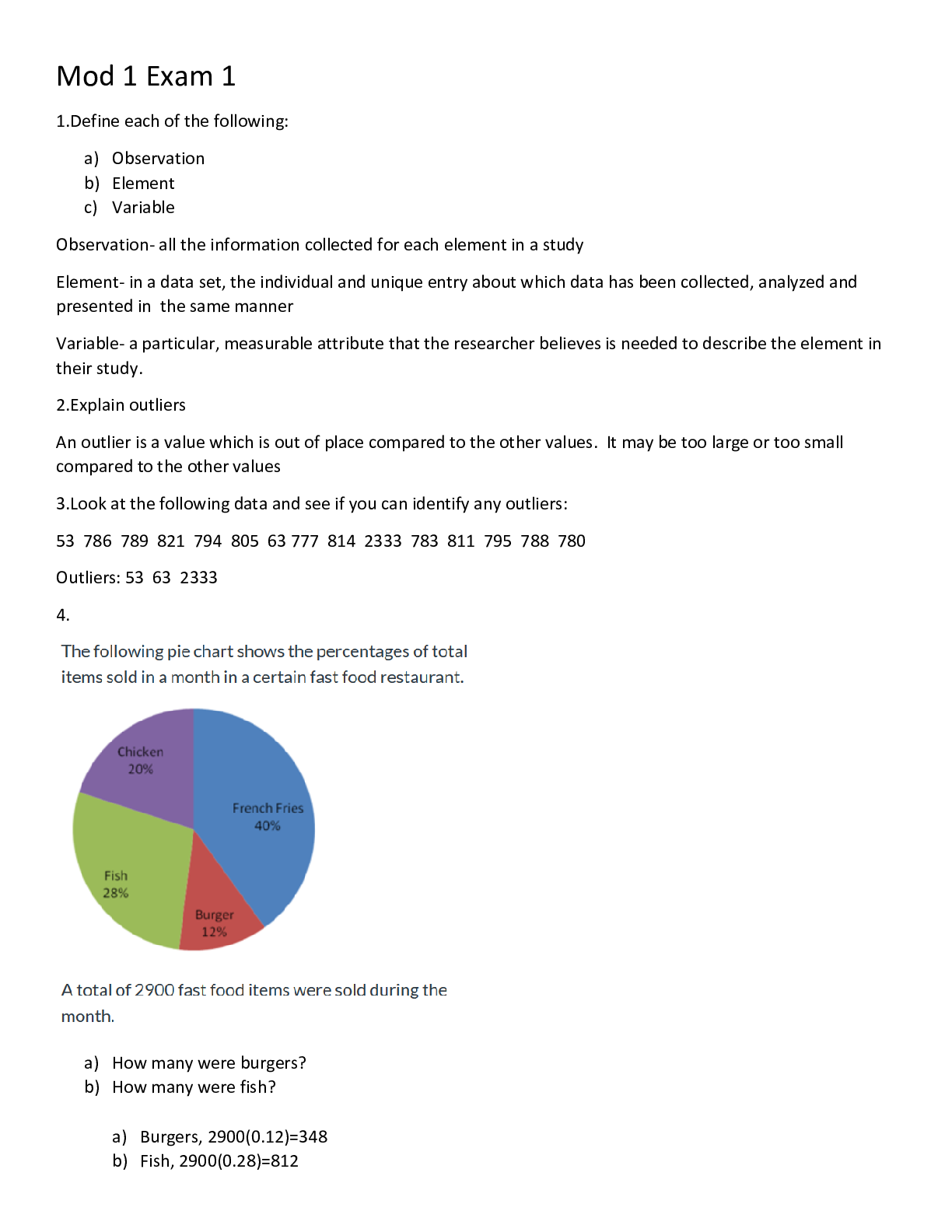


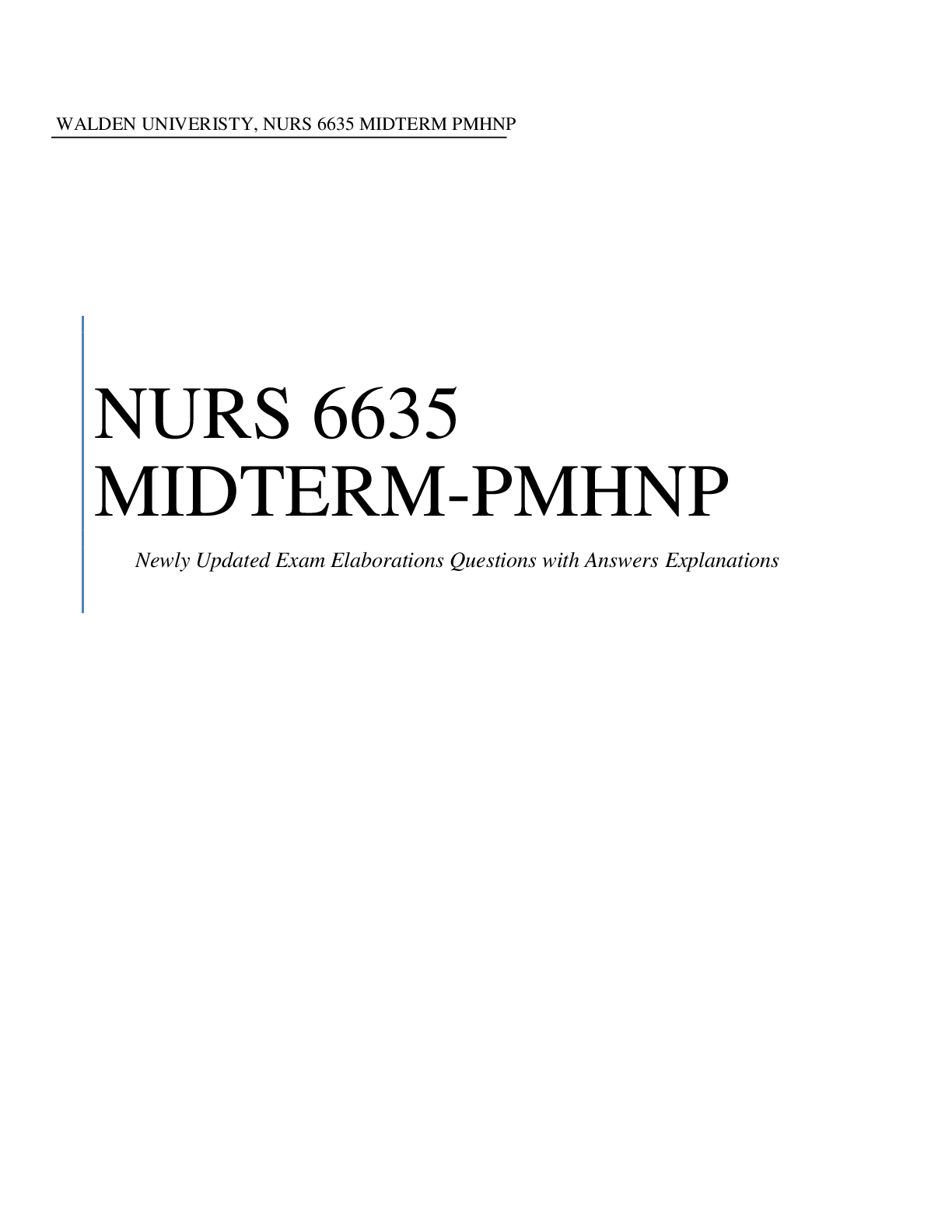

.png)


